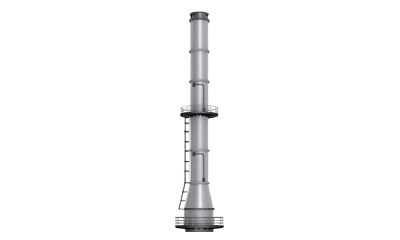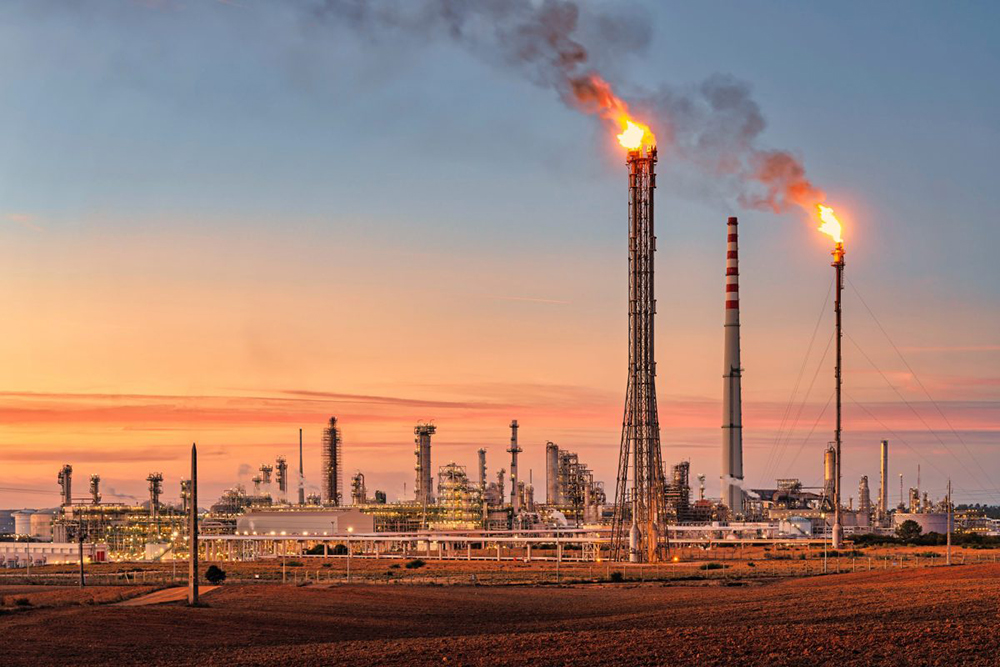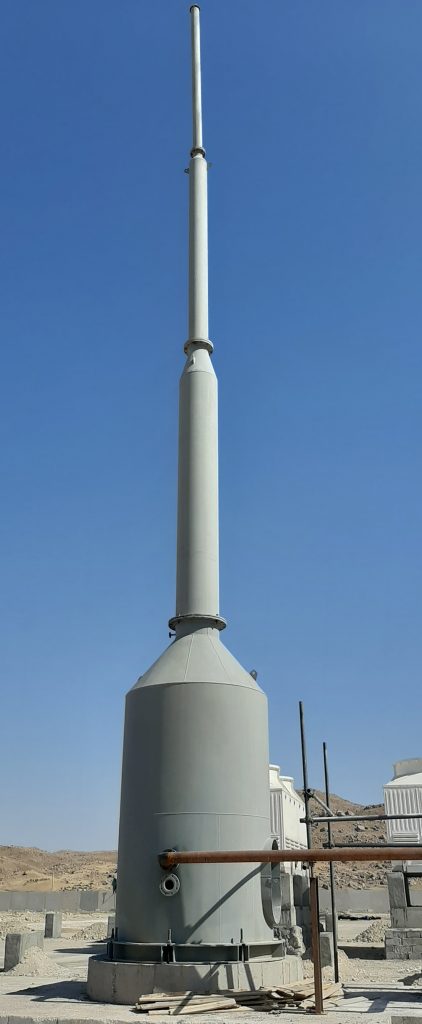Petroleum flare is essential equipment in oil and gas refineries designed to burn off waste gases produced during various refinery processes. These gases typically include hydrocarbons and various chemical compounds that need to be safely burned to prevent environmental pollution and safety hazards.

Petroleum flare is primarily used for the safe and efficient disposal of waste gases. These gases can be produced under normal operational conditions, during emergency situations, or due to unexpected shutdowns. Flares play a crucial role in preventing the accumulation of flammable and hazardous gases in refineries and reducing the emission of pollutants into the environment.
Petroleum flares are constructed from materials resistant to high temperatures and corrosion to withstand harsh operational conditions and high temperatures. Common materials include:

Petroleum flares are classified into several types, each with specific features and applications:
These flares use an open flame to burn waste gases. They are used for burning large volumes of waste gases during emergency situations and routine operations. They can handle gases with varying compositions and are designed to reduce air pollution and prevent the explosion of flammable gases. These flares produce a tall, visible flame.
Designed to burn gases without producing visible smoke, these flares are used in locations where reducing visual pollution and smoke is important, such as near residential or sensitive industrial areas.
These flares are designed to burn hydrocarbon liquids and associated gases. They are used when waste gases contain liquid components, providing safe and efficient burning.
Named for their horizontal orientation, these flares are installed horizontally and are used in locations where vertical space is limited or where there is a need for even distribution of waste gases along a horizontal path.
These small burners are used to ignite larger refinery flares. Pilot burners remain lit continuously to ensure that the main flare can be ignited when needed.
Located inside furnaces and boilers, these burners provide direct heat for various refinery processes. They typically operate with natural gas or refinery fuels.
Used for indirect heating, radiant burners transfer heat through radiation to the process. They are utilized in furnaces and specialized thermal equipment.
These burners use catalysts to enhance fuel efficiency and reduce emissions. They are valued for their ability to reduce pollutants and increase fuel efficiency.
Capable of using two different types of fuels (e.g., natural gas and kerosene), these burners allow refineries to optimize fuel usage based on changing conditions and fuel prices.
Designed to operate with maximum efficiency and minimal energy loss, these burners are used in processes requiring high temperatures and fuel efficiency.

Importance of Safety: Petroleum flares must meet high safety standards due to their operation with flammable and explosive gases. They should be equipped with safety control systems to quickly shut down or cut off the fuel supply in case of a problem.
Pollutant Control: Petroleum flares play a vital role in reducing air pollutants. Advanced technologies such as catalytic flares and high-efficiency burners help reduce emissions of pollutants like nitrogen oxides (NOx) and carbon dioxide (CO2).
Energy Efficiency: Flares should operate with high energy efficiency to reduce fuel costs and improve process efficiency. Dual-fuel and high-efficiency burners contribute to this goal.
Maintenance and Repairs: Regular maintenance and repairs are crucial for ensuring the proper and safe operation of petroleum flares. This includes periodic inspections, cleaning, and replacing worn parts.
Automatic Control: Many modern flares feature automatic control systems that continuously monitor and adjust temperature, pressure, and fuel flow, enhancing accuracy and safety.
Technological Advances: The technology of petroleum flare is continually evolving, with research focused on new materials, innovative designs, and the use of artificial intelligence for optimal flare control. These advancements help improve efficiency and reduce emissions.
Conclusion
Petroleum flares are essential equipment in the oil and gas industry, used for safely burning waste gases generated during various refinery processes. They play a critical role in reducing environmental pollution and enhancing safety in refineries. With the use of heat- and corrosion-resistant materials, these flares can achieve high efficiency and long-term durability. Various types of petroleum flares, each with specific features and applications, allow for optimal management of waste gases in different operational conditions.
Petro structure implements all kinds of power plant, refinery and industrial equipment such as spherical tank, cylindrical tank, distillation tower, flare, vessel, etc. This complex has the possibility of making flares by using expert advices and required equipment. For more information contact our experts.
References